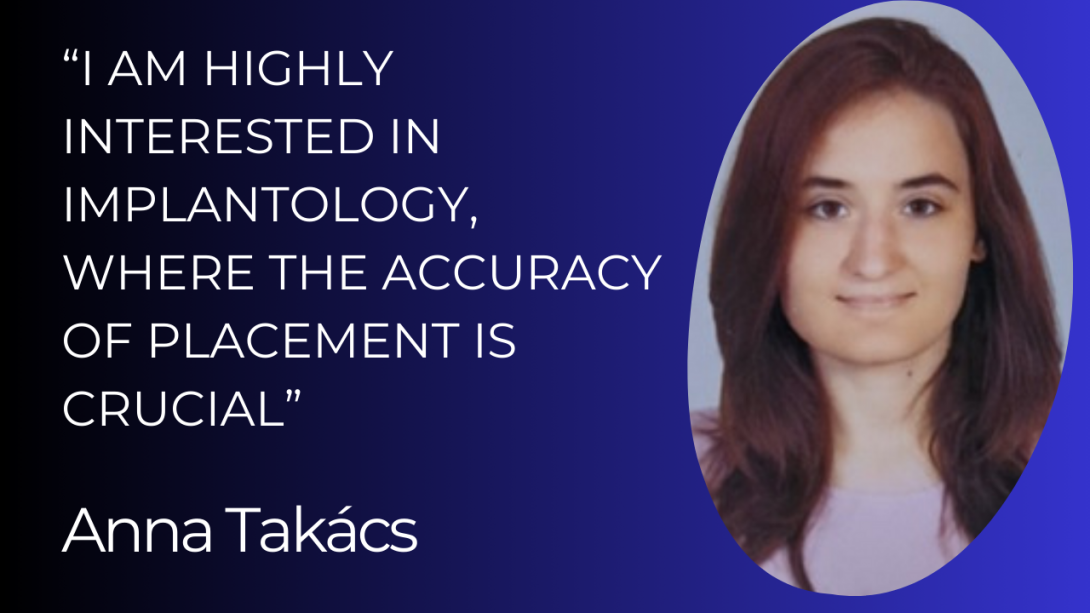
She was already interested in research as a dental student, so it was natural for her to continue it after obtaining her degree. Her academic work is progressing well, as she has recently published a highly influential study in the Journal of Dentistry. In January, Dr. Anna Takács was named Best First-Second-Third-Year PhD Student at the Centre for Translational Medicine.
Anna Takács started researching as a dental student, and after obtaining her degree, she immediately applied for the Centre for Translational Medicine's PhD program, where she is currently in her second year. She is also participating in residency training, aiming to become a dentoalveolar surgeon. What she likes most about the CTM training is that the program is hybrid, so she can work at the clinic as well as do research. “As a student researcher, I examined the accuracy of dental implants placed with the help of augmented reality. This was an in vitro study conducted with my supervisor, Dr. Márton Kivovics. My PhD research is also related to augmented reality.”
In this project, Dr. Takács started preparing a meta-analysis based on their previous studies. Her clinical question was about the accuracy of the augmented reality based computer-aided implant surgery (CAIS), the freehand implant placement, the static and the dynamic CAIS, and the robot-assisted implant surgery. Her meta-analysis was recently published in the Journal of Dentistry, a high-impact journal. “The results of our study show that augmented reality allows more accurate implant placement than freehand placement. I am pleased to test a new method that has not been used in dentistry before, and to help introducing it into everyday practice. I am highly interested in implantology, where placement accuracy is crucial.”
Dr. Takács has an another project related to augmented reality, which is currently underway. This study investigates the learning curve and accuracy of augmented reality based and conventional dynamic navigation implant placement. She and her colleagues hypothesize that the augmented reality method is faster to learn and to reach clinically acceptable accuracy than the conventional one.
(Szabó Emese)